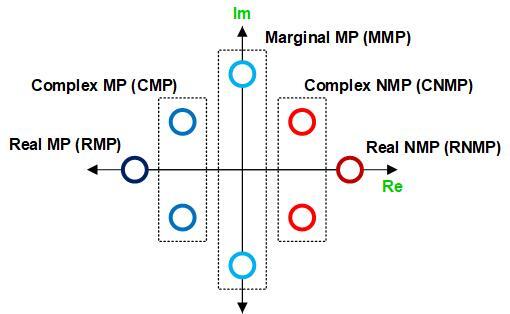Non-Minimum Phase Zeros of Flexible Systems
|
Flexible system dynamics plays a vital role in the performance of several motion and vibration control applications such as space structures, rotorcraft blades, hard-disk drives, flexure mechanisms, and motion systems with transmission compliance. These applications often require the use of feedback and feedforward controls in an attempt to achieve desirable dynamic performance, which generally includes high speed, low settling time, strong disturbance rejection, low sensitivity to modeling uncertainties, and stability robustness. 
|
PUBLICATIONS
| J28. | Cui, L., Okwudire, C., and Awtar, S., 2017, "Modeling Complex Non-Minimum Phase Zeros in Flexure Mechanisms", ASME Journal of Dynamic Systems, Measurement, and Control, 139 (10), 101001 (9 pages), DOI: 10.1115/1.4036032 |
| C41. | Cui, L., Okwudire, C., and Awtar, S., 2016, "Complex Non-Minimum Phase Zeros in the Dynamics of Double Parallelogram Flexure Module based Flexure Mechanisms", Proc. ASME Dynamic Systems and Controls Conference, Minneapolis, MN, Paper # DSCC2016-9658 |
| C44. | Rath, S., and Awtar, S., 2020, "On the Zeros of an Undamped Three-DoF Flexible System", ASME Dynamic Systems and Control Conference (DSCC), Pittsburgh, PA, Paper # 3320 |
| J31. | Cui, L. and Awtar, S., 2019, "Experimental Validation of Complex Non-Minimum Phase Zeros in a Flexure Mechanism", Precision Engineering, 60, pp. 167-177, DOI: 10.1016/j.precisioneng.2019.08.002 |
| J35. | Rath, S., and Awtar, S., 2020, "On the Zeros of an Undamped Three-DoF Flexible System", ASME Letters on Dynamic Systems and Controls, 1 (4), 041010 (6 pages), DOI: 10.1115/1.4050339 |
| C46. | Rath, S. and Awtar, S., 2021, "Non-minimum Phase Zeros of Two-DoF Damped Flexible Systems", Modelling, Estimation and Control Conference, Austin, Texas, October 24-27, IFAC-PapersOnLine, 54(20), pp.579-585,https://doi.org/10.1016/j.ifacol.2021.11.234. |
| C47. | Rath, S., Maheshwari, A. and Awtar, S., 2022, "Distribution of Real and Imaginary Zeros of Multi-DoF Undamped Flexible Systems", American Control Conference, Atlanta, GA, June 8-10, accepted |

 HOME
HOME  RESEARCH
RESEARCH